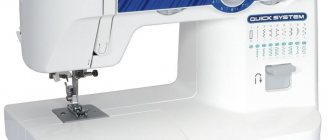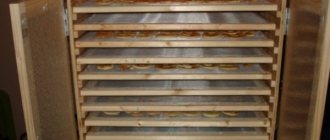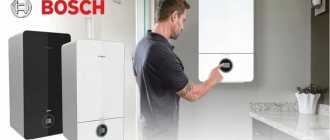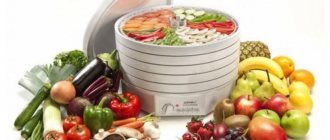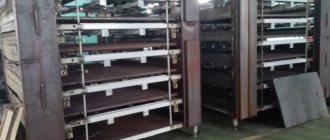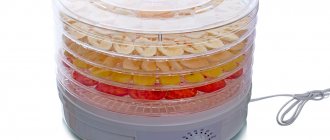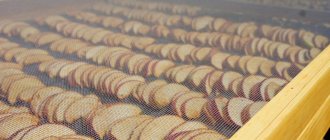The question of which dryer to choose for vegetables and fruits is especially relevant in the autumn. When there is a lot of harvest and you want to make more reserves for cold times.
The dryer will also be useful in another season, because it is perfect for any plant products. Its design is designed in such a way that the product is dehydrated while retaining its beneficial qualities - vitamins, etc.
In this review, we will talk about how to choose the right dryer for vegetables and fruits, based on its design, types and characteristics.
What types of dryers are there?
The process of processing raw materials in a dryer for vegetables and fruits affects which one to choose:
- Convective.
- Infrared.
A convection dryer operates simply and is less expensive than infrared models. It has a heating element and a fan that circulates the heated air, which in turn draws water out of the food.
Also read: How to properly set up an air conditioner: basic operating rules
There are other models - without a fan with natural convection, but in them the processing process is longer. If a model with a fan has a day, without it it can take several days, depending on how much water is in the product.
If you choose a convection dryer for fruits and vegetables, be aware that the food may become covered with a film. But they are completely usable.
An infrared dryer acts on raw materials with infrared rays. They penetrate the product by 6-12 mm and arrange its molecules differently.
Water drains quickly at 40-60 degrees. But at the same time, the product remains healthy, contains vitamins, minerals, and does not change its color or taste.
Power
When choosing a vegetable dryer based on power parameters, one economic nuance should be taken into account. High wattage appliances use more electricity but have faster drying times. With less power, not so much electricity is “eaten up,” but the process takes longer. As a result, the difference in costs is practically reduced to zero.
For the home, the best choice would be a vegetable dryer with a power of 300-400 W. This is enough to dry 4-5 trays in 7-9 hours. With high power, more trays can be placed inside the machine at the same time. This is more productive, but not always effective. User reviews say that loading 7-8 trays into the dryer at the same time makes it difficult to cook vegetables on the upper tiers. On the lower tiers, the fruits dry in 8 hours, and on the top ones in 15. You can avoid this by periodically alternating the position of the trays from bottom to top.
Design of dryers for vegetables and fruits
To choose the right dryer for vegetables and fruits, it is worth understanding how it works.
Let's look at the main elements:
- Without the heating element, the dryer would definitely not be able to function; it is this element that provides hot air. The number of heating elements varies. If the dryer has a fan, there is only one. If it is not there - two. The heating element is located at the top or bottom of the structure.
- Thanks to the engine, the heating element and other elements work.
- The thermostat makes it possible to set degrees and keep them at the same level. Sometimes, for the comfort of users, manufacturers show temperature levels.
- The fan distributes warm air.
- The tray resembles a plastic plate with holes at the bottom through which air flows to the top. There can be five or more plates.
- The kit also includes a plastic lid covering the tray. It has a hole at the top through which steam escapes.
The presence of other elements determines which fruit and vegetable dryer you choose. There is often a timer showing the process time.
Principle of operation
All dryers run on electricity. Thanks to it, optimal conditions are created for drying products - the temperature rises and air flow is ensured. The air flow is generated using a fan, which can be located at the bottom, less often on the side and top of the device. The fan performs the function of wind. But, unlike natural conditions, it blows constantly and evenly, which improves the dehydration process.
The heating element (heating element or infrared) makes the flow of artificial wind hot or warm. Products are cut into small pieces or slices and placed on removable trays. The dryer body helps maintain the necessary microclimate inside the device and protect products from insects that can spoil them.
How to stick a thermal sticker on clothes? Check out the step-by-step instructions.
Find out how to care for home jasmine, how to water and propagate the plant from this article.
Characteristics of dryers for vegetables and fruits
When choosing a good dryer for fruits or vegetables, you should pay attention to the following characteristics:
- Power . It affects how quickly fruits or vegetables are processed. The more powerful it is, the faster the dryer works, but at the same time it consumes more electricity. If you don’t plan to make workpieces often and your family is small, a model up to 350 W will be enough. When the family is larger, they make more supplies, and a dryer of up to 450 W is needed. Everything above is worth buying for someone who prepares not only for themselves, but also for sale, or shares with relatives.
- heating element. When choosing a dryer for vegetables and fruits, it is important to find out about the heating position. It can be located on the side, at the top of the structure (the best option, since water does not reach the heating, but such drying is more expensive), at the bottom of the structure (less practical, since water flows down and can damage the heating element).
- Air circulation . It can be forced or natural. In the first case, the fan runs, so the evaporation process itself occurs faster. But the beneficial properties of the raw materials are preserved. Natural circulation for those dryers that do not have a fan. Products will take longer to process.
Also read: How to fix an oven with your own hands: troubleshooting
- Number of pallets . The capacity of the dryer is judged by the pallets, so it is also important to take it into account when deciding which one to choose. If you are planning large workpieces, buy the model with more pallets. Usually there are about 5 pieces.
- Loading . This is a characteristic that indicates how many products can be processed at a time. As a rule, one plate can hold 1 kg.
- Products. When choosing a good dryer, keep in mind that you can process not only fruits and vegetables, but also fish, mushrooms, cereals, nuts, herbs and flowers.
To better understand the set of characteristics and choose a dryer for vegetables and fruits, read user reviews
Device
The operating principle of the vegetable dryer is simple. It consists in ensuring the circulation of warm air masses, which leads to the gradual evaporation of liquid from the products. The gradual release of moisture prevents the formation of harmful microorganisms on the fruit. Drying should occur at a low temperature so that the workpieces do not lose vitamins.
When dried in an oven, most of the vitamins are lost because the temperature in the oven is higher. An electric vegetable dryer is designed so that the fruits are not heated to a temperature at which most of the beneficial substances are lost. An electric heater is installed in the body of the device, which does all the work. There are models of dryers with a fan. It noticeably speeds up the process; also, under the influence of a fan, the moisture from the dried products evaporates better and the fruits dry out more evenly.
The capacity of the device depends on the number of drying trays, which are located one above the other. Their number varies depending on the model. The most commonly chosen dryers are those with 5-7 trays. This capacity is enough for home use. There are devices with increased volume; for processing a large harvest, it is better to choose them.
The simple design of the device makes its operation as simple as possible. Cut the fruits into slices, place them on trays, place everything inside the equipment and turn it on. Having set the required temperature in the vegetable dryer, after a short time all the moisture will evaporate without compromising the beneficial properties of the product.
Additional characteristics of dryers
The presence of additional functions determines the model of fruit and vegetable dryer you choose.
Manufacturers offer:
- Air speed regulator. With its help, you can adjust the circulation speed, focusing on the raw materials and their weight.
- Timer. Using it, you set the operating time of the device, that is, you can say “stop the process” after a certain hour.
- Auto power off. A safety function that turns off the device if there is a risk of overheating. This increases the service life of the heating element.
- Indication . As a rule, there is electronic control. Allows you to see the time, temperature on the panel. The mechanics have a light bulb instead.
Tips for use
Having dealt with the question of how to choose a vegetable dryer, finding the best model for yourself will not be difficult. A few tips will help you in operation.
- Move trays inside the dryer.
- Start drying vegetables at high temperature, reduce the heat as they are ready.
- When drying something for the first time, it is worth doing a test drying first. This will prevent the food from drying out in the future.
- After finishing drying, put the prepared supplies in a glass container or canvas bag for storage. This will protect dried vegetables from adverse environmental influences.
- Do not dry fruits damaged by pests and diseases. A vegetable dryer is completely unable to destroy harmful microorganisms and pests, which during storage can harm a “healthy” batch of supplies.
By applying the tips in practice, you will preserve the harvest for a long time. In addition to the information received, you can read the rating of the best dryers by clicking on the link. The compiled rating may help you in choosing a vegetable dryer.
Material of manufacture
The most common question when purchasing: Metal or plastic?
If we talk about strength, then of course metal is the leader in this. But models made of metal are very heavy, illegible and large in size.
The walls heat up very quickly, it is impossible to use without oven mitts, and you can get burned.
Plastic models are more fragile. But they have many advantages. For example:
- Easy to disassemble, can be taken to the country;
- Quite light and easy to carry;
- Compact, take up little space;
- The walls practically do not heat up;
- Plastic is a transparent material, you can look at the vegetables without pulling them out every hour.
How to dry food
To properly dry vegetables or fruits in an electric dryer, you need to follow simple rules:
- Wash and cut the food into thin slices or slices no more than 5 mm thick. This thickness allows the products to dry faster.
- Apples can be soaked in acidified water to prevent them from darkening. They need to be dried before placing them in the dryer.
- Sour berries can be soaked in syrup for a while (1 part sugar to 1 part water). After this, let the syrup drain completely.
- If small berries fall out through the openings of the section, you need to place parchment under them. First make a few holes with a toothpick to allow the juice to drain.
- Place the sliced products in a single layer on trays and set the required drying time.
READ ALSO: Trimmer line
Heating element location
The heating element can be located in three main directions:
- Below - this option is considered the most common. They are easy to disassemble, assemble, carry, and change trays. However, due to the fact that the tray is close to the heating element, moisture from the enclosed products always gets on it. This always leads to breakdown.
- On the side. This option, at first glance, resembles an oven. Air circulates from the back of the dryer. There are baking trays inside the device, which resembles an oven. They can be pulled out without any problems without affecting the others. In addition, you can remove them altogether, or remove one that you do not need. Among the nuances are large volume and high price. But this model is considered the most convenient.
- Above. This option has the longest service life. Due to the fact that the heating element is located on top, moisture does not get there and therefore it lasts much longer than others. But not very convenient to use.
